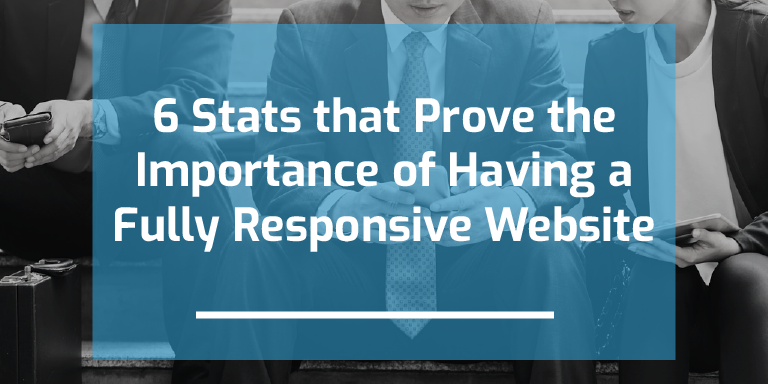Having a fully responsive website across all device is no longer an option; it’s every website visitors' expectation. This blog explains the importance of having a fully responsive website by sharing 6 industry statistics and 3 website KPIs (key performance indicators) that are impacted!
Before we jump in, if you’re unclear as to what we mean by ‘responsive websites’; a responsive design ‘responds’ according to a device’s screen size (large or small), as well as its orientation (landscape or portrait). It’s fluid and dynamic, meaning it looks different across all mobile devices and content adjusts automatically. As a result, web visitors can find and use your website, no matter what device they're on (think smartphone, iPad, or laptop computer).
.jpg?width=900&name=rvsn-2%20(1).jpg)
Your website's responsiveness impacts these 3 KPIs:
- Longer loading times
No one enjoys waiting for a web page to load, in fact:
If your website isn’t responsive, it will result in longer loading times. This is because responsive websites require fewer steps to deliver content to their mobile users. It runs the same as any other webpage as it is just HTML and CSS. Whereas, non-responsive websites take additional steps before the user receives the content. These steps include browser detection and redirection, which is most taxing to page loading speeds.
See how this works in an illustration here: Why We Hate Non-Responsive Websites (Speed Edition)
- Lower Search Ranking
Long loading times aren’t great but even worse, is that having an unresponsive website will significantly lowering your search ranking with Google. Google updated mobile-friendliness as a ranking signal as of April 21, 2015. Which means your chances of being found by prospects drops as a result of your website being unresponsive.
How much does this matter? Well,
Google drives 96% of mobile search traffic. (Jody Nimetz Co., 2018)
48% of customers started searching for the product they bought on mobile first. (Google, 2018)
That’s almost half of your prospects that could potentially be bypassing your business for another, because of a poorly designed website.
Click the image to look at a few of our layouts! (Of course, all of our websites are fully responsive)

- Conversion Rates
First impressions matter and your website is your business’s first chance to impress your visitors. Together, low loading times and lower SEO (search engine optimization) results in poor customer experience and therefore, lower conversion rates. More specifically,
A delay of one second in mobile page response can reduce conversions by 7%. (99 Firms, 2019)
Apart from this, have you ever viewed a website on your mobile device and all the elements were a jumbled mess on the screen? It’s no wonder that,
On the flip side, having a website that adjusts the screen size will have a very positive impact on your conversion rate. In fact,
That’s over half of your potential web traffic to convert into qualified leads, with the help of a well designed and thought-out website.
There you have it, 6 stats and 3 KPIs that prove how important it is to have a fully responsive website. Chat with one of our website specialists to see how we can help take your website to the next level. 





.png)

